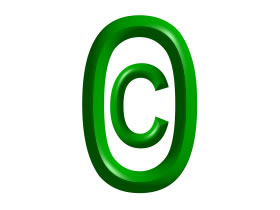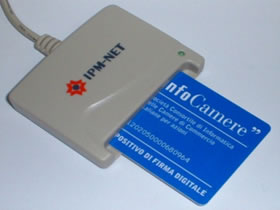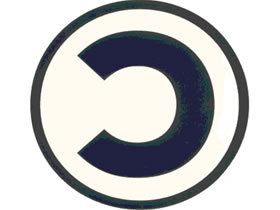COPYZERO: ALL RIGHTS DIGITALIZED
di Maria Molinari
 The Movement Costozero is a no-profit association that is fighting for free of charge communication rights, considered to be a real source of development. It supports free information and free access to the means of communication, the diffusion of open content, and the adoption of free software in public administration, in companies, in associations, in schools, in universities and in scientific research. Amongst various concrete projects and services promoted and offered by the movement – a list is available in the section Proposals and Services at www.costozero.org -, there is Copyzero, a way of safeguarding the author's rights (copyright) at cost zero (free of charge) and above all the author's permission ( copyleft ).
The Movement Costozero is a no-profit association that is fighting for free of charge communication rights, considered to be a real source of development. It supports free information and free access to the means of communication, the diffusion of open content, and the adoption of free software in public administration, in companies, in associations, in schools, in universities and in scientific research. Amongst various concrete projects and services promoted and offered by the movement – a list is available in the section Proposals and Services at www.costozero.org -, there is Copyzero, a way of safeguarding the author's rights (copyright) at cost zero (free of charge) and above all the author's permission ( copyleft ).
The author's rights (copyright) (in Italy regulated by the law 22 April 1941, n° 633) include moral rights, that is the paternity and integrity rights of the work and the right of withdrawal from the market, and the property rights, such as the rights to royalties and the rights to publish, to reproduce, to distribute and to modify. Moral rights are inalienable, indefeasible and can not be renounced, that is they will always belong to the author, while the property rights can also be assigned to, for example a publisher, in exchange for money. Many, unfortunately, think mistakenly, that such rights are accredited to one author only if he has registered with or if he has deposited his work at the Siae, the italian society of authors and publishers . The author's rights (copyright), instead, is automatically applied to the work at the moment of its creation, without it being necessary to follow any administrative formalities, to join any association, or to resort to any type of registration.
 |
This being clear, it is obvious that the author/s must give, if they want to protect themselves wholly, legal proof of the work's paternity and of its existence on a certain date, especially in cases of legal dispute. Many also turn to the Siae for this reason, but in many cases, they could do without it.
The Siae mostly deals with the protection and the preservation of the author's rights, that is regulating license and the use of the work for commercial and business purposes, with the collection of earnings and their sharing. “If you are on the market – as Nicola A. Grossi, President of the Costozero Movement explains - the Siae can be useful (a type of commercial partner), if you are not on the market the Siae is not necessary. The truth is that most of the authors are not on the market and they turn to the Siae anyway. A person who is not registered and lodges with the Siae, doesn't want to (and can't) receive royalties from the Siae, he only intends to protect his own rights”.
Such rights however can be protected with alternative technological and juridical instruments, as efficient and less expensive (a complete list at this link: www.comune.torino.it/musicainpiemonte/consulenze.htm). Amongst those there is Copyzero, the protection of the author's rights by affixing a digital signature and a chronological postmarking .
 |
A digital signature, for those of you who do not know, is the electronic equivalent of a traditional signature on paper. It has the same legal value.* The only difference being that it is always associated to an electronic document, to which it affirms certain information about the integrity (that is that the document hasn't been altered), the authenticity (the identity of the person who signs it) and the ownership (the author can not disown a signed document). The chronological postmarking, instead , gives proof that a document already existed at the moment of the postmarking and before a certain date. On the postmark the time and the date are indicated, together with the name of the postmarker and the impression of the marked document (that is a sequence of numbers of a fixed length that unambiguously identifies the file). “From a technological point of view – as Grossi explains – the chronological postmarking requires more technical resources. It's not by chance that affixing a postmark has a cost (0,36 euro), while affixing the signature does not”.
The procedure to be followed is simple. The author converts his own work into a digital format, he inserts the copyright data and whatever licence and finally the signature and the postmark, using a smart card, the relative decoder and a specific software (usually a multi-platform). If the decoder is available everywhere, in all entitled shops, the smart card can be collected at the Certifying Body, so called because it releases a “digital registration certificate” where the identity of the smart card holder, the assigned public key, the certificate expiry date and the data of the Certifying Body are indicated. In doing so the holder enters into a public list of certificates and whoever wishes to verify the validity of his/her document can do so by consulting this on line list or by requesting information directly from the Certifying Body. InfoCamere, the Information technology Consortium Company of the Italian Chamber of Commerce, is one of the first and most efficient
(www.card.infocamere.it/firma/cps/manualeoperativo_PRA_2.12_I.pdf )
 |
The signature protects property and moral rights, and it is also convenient from an economical point of view. Protecting one's own rights through the Siae, in fact, costs a person who is not registered 110 euro for every single lodging, to be paid every 5 years for renewal. Buying a smart card and a decoder costs mush less, not more than 50 euro, and you only pay once ( the price of which will decrease in the next few years). For those willing but not able to buy the smart card and the decoder there is always Copyzero On-line a free service, but reserved to supporters, those who have donated at least one euro to the association.
The procedure to follow for Copyzero Online is even quicker. The work converted into a digital format is compressed into a protected archive with a password (the size of the file must not be more that 20 MG) and it is sent directly to copyzero.org, together with a filled in form and an identification document. If it is software, the archive file will have to contain the sources. Once copyzero.org has postmarked it (in the case of Copyzero Online the postmarking is what really counts), the author will be able to download it online. Online it will always be possible to examine and verify the validity of the file (the signed and postmarked ones have respectively extension .p7m e .m7m), that would otherwise not be readable without the required software. ( www.card.infocamere.it/servizi/vericert.htm).
 |
Copyzero favours above all, but not exclusively, copyleft, open content and those who are not registered with the SIAE (and therefore get no royalties). “That doesn't mean – as Grossi points out – that royalties disappear if one doesn't turn to the Siae. It is always possible to sell one's own work on the internet. Furthermore, if it's not a business, but an occasional sale, and if one is not registered with the Siae, it's possible to sell one's work without having to open a VAT number and without requesting the Siae multimedia licence”. “Licensed software – he explains – is "self-protected" (the source is invisible and therefore it is not easily “appropriated”). Free software on the other hand, is for its own nature more exposed to illegal abuse of the code. In open content the work is often collective and progressive: it is advisable to protect it “day by day” (this obviously also goes for free software)”. Copyzero not only fortifies copyleft by helping its respectability in all of those rare cases in which it is weak, but it is also particularly useful for work in progress or for work that is being developed collectively, because it gives every new author the possibility to add their own signature to that of the previous authors and to place a new postmark on every new version.
To the question “Can Copyzero be defined a valid alternative to the Siae?”, Grossi replies: “Yes, for those who are not interested in receiving royalties through the Siae. The qualified digital signature is a very powerful instrument above all in countries like Italy . Today, with a qualified digital signature contracts are signed (the same open content licences are contracts, the unconscionable clauses of which need subscription: otherwise, those clauses, such as, for example, the limited liability clause, are null and they can cause the nullity of the whole licence). Tomorrow, it will be possible to sign petitions online (a nice vision of participated democracy)... many uses, a lot of opportunity for progress. Of course, only a few people know how to use a qualified digital signature. If Copyzero is not well known it is also because the potential of the digital signature are not well known, although some juridical websites constantly talk and go in depth into the subject”.
 |
Even if Copyzero is not spoken about very much, there are already many people who use it to protect themselves: writers, photographers, designers, programmers and above all musicians. There were so many requests for Copyzero Online that it was necessary to set one rule: “between one request and another there must be 15 days”. Many compare Copyzero to the Creative Commons licences
( http://www.scuolaonline.wide.it/Pagine/pianowork22.htm), others compare it to Copyzero X , the first, and the only licence made in Italy . If Copyzero protects the work, the Copyzero X licence frees it. However, this is another thing and we will face it in the next issue.
* The digital signature has been compared to the traditional one by the DPR 10 November 1997, n. 513. The main law that governs it and the delegated decree 5 march 2005, n. 82, which will be in act the 1° January 2006.
www.costozero.org
www.card.infocamere.it
www.siae.it

